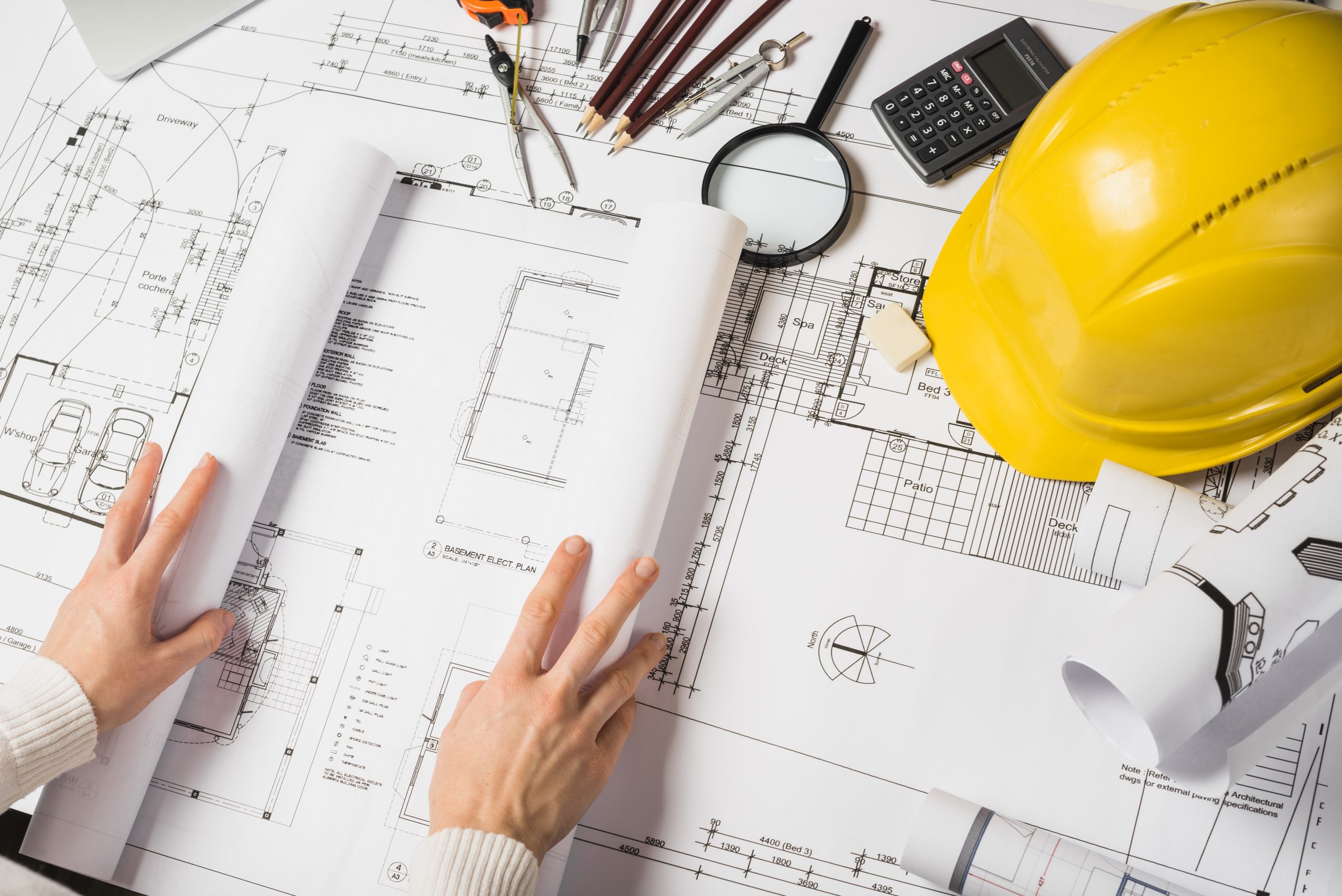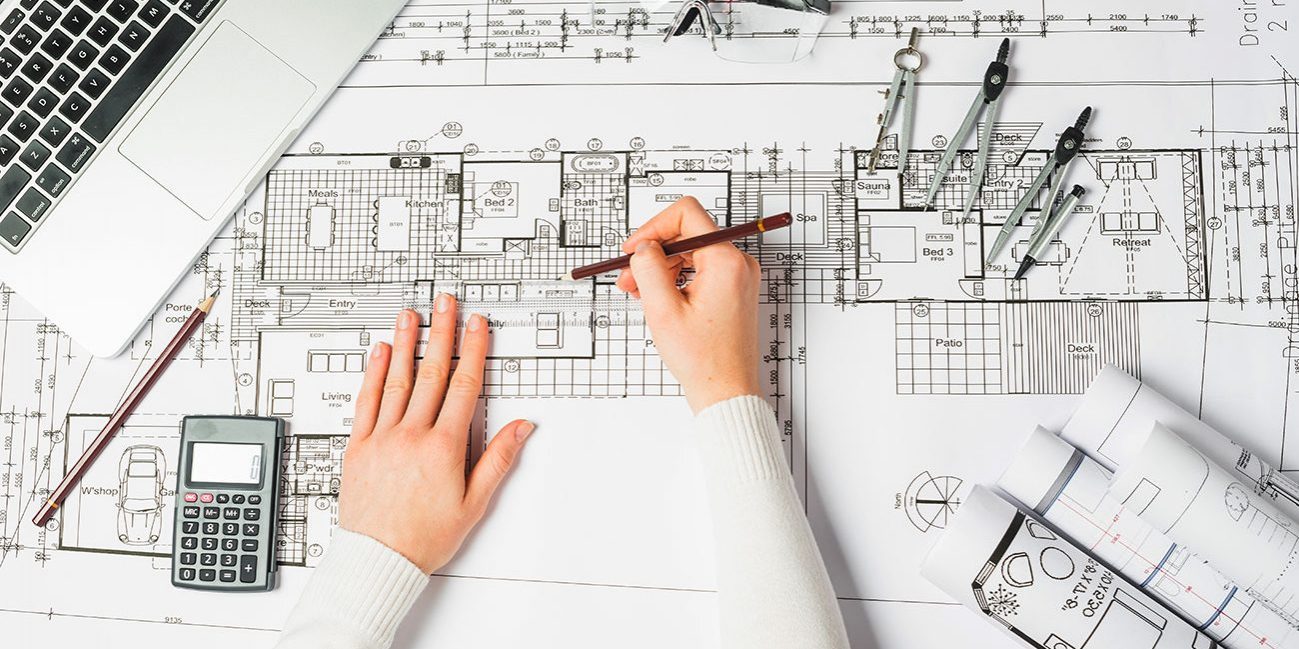Architect Services Explained: What to Expect from Start to Finish
Architect Services Explained: What to Expect from Start to Finish
Blog Article
Comprehending the Diverse Job Paths Available for Aspiring Architect
As a hopeful Architect, you have a globe of career paths waiting for you. Whether you're drawn to standard design or the nuances of lasting design, there's a niche that aligns with your interests.
Typical Style: Creating Structures and Frameworks
Standard style focuses on creating structures and frameworks that blend capability with aesthetic charm. Your layouts can mirror social heritage, showcasing regional practices while meeting modern-day demands.
You'll establish abilities in drafting, model-making, and site evaluation, allowing you to envision and interact your ideas successfully. Engaging with clients, you'll need to comprehend their vision and equate it right into viable styles.
In addition, developing codes and sustainability practices are essential in your work, ensuring your frameworks are secure and eco-friendly. As you expand in your career, you'll locate chances in residential, business, or even restoration jobs, each offering one-of-a-kind challenges. Welcoming conventional design paves the way for a meeting career that admires the past while shaping the future.
Urban Planning: Shaping Neighborhoods and Public Spaces
As an ambitious Architect, you can play a crucial function as an urban organizer, transforming how communities connect and operate. By using area engagement methods, you'll assure that residents have a voice fit their setting. And also, incorporating sustainable layout concepts will certainly assist develop spaces that not only fulfill today's requirements however likewise safeguard the future.
Role of Urban Planners
While many may think of designers as the single dreamers behind buildings, city organizers play a vital duty in forming the more comprehensive landscape of areas and public rooms. By teaming up with different stakeholders, you'll aid design parks, transport systems, and residential areas that advertise social interaction and availability. Your proficiency in spatial design and area dynamics enables you to imagine future growth while protecting cultural heritage.
Community Engagement Strategies
Effective neighborhood involvement methods are essential for city planners to guarantee that the voices of citizens are listened to and valued in the preparation process. To foster meaningful discussion, you must focus on open online forums and workshops where area participants can share their ideas and issues. Usage surveys and social networks to get to a wider audience, guaranteeing varied viewpoints are consisted of. Working together with local organizations can boost count on and help with deeper connections. It is necessary to provide clear info regarding decision-making procedures and suggested projects, permitting citizens to feel informed and equipped. By proactively including and paying attention comments, you'll develop spaces that reflect the neighborhood's demands, inevitably causing more lasting and effective city settings. Embrace openness and constant discussion for lasting influence.
Lasting Style Concepts
When creating urban spaces, incorporating sustainable layout principles is important for producing atmospheres that flourish both environmentally and socially. You need to start by concentrating on energy efficiency, using materials that decrease waste and advertise recycling. Think about integrating green rooms, like parks and gardens, to improve biodiversity and improve air high quality. Promoting walkability and public transport can reduce reliance on autos, promoting a much healthier area.
Creating with water preservation in mind is additionally key-- consider rainfall yards and absorptive surfaces to manage stormwater. Entailing community members throughout the preparation process guarantees that the rooms you produce meet their demands and encourage social interaction. By accepting these principles, you'll add to dynamic, lasting metropolitan landscapes that profit everybody.

Landscape Design: Producing Sustainable Exterior Settings
As you explore landscape architecture, you'll discover essential style concepts that produce lovely and functional exterior rooms. Lasting techniques play an important function in making sure these settings thrive while minimizing environmental effect. Plus, you'll locate a range of job opportunities that enable you to make an actual distinction in exactly how people engage with nature.
Layout Concepts in Landscape
Recognizing design principles in landscape architecture is vital for producing sustainable outside environments that harmonize with nature. You'll require to consider elements like equilibrium, scale, and proportion to ensure your layouts really feel cohesive and welcoming. Additionally, pay attention to seasonal changes, making with materials that enhance the environments year-round.
Sustainable Practices Overview
Sustainable techniques in landscape architecture not only concentrate on appearances however also focus on ecological health and resource conservation. By incorporating native plants, you enhance biodiversity and reduce the need for chemical plant foods and chemicals. Implementing efficient irrigation systems helps conserve water and reduces drainage, protecting nearby communities. You can design rooms that promote soil health, such as exercising and making use of organic materials permaculture concepts. In addition, including environment-friendly facilities, like rain gardens and porous sidewalks, aids in stormwater monitoring and reduces urban heat. When you create exterior settings with sustainability in mind, you contribute to a much healthier earth and offer rooms that promote community connection. Eventually, these methods ensure your layouts benefit both individuals and the setting for years ahead.
Profession Opportunities Exploration
With a strong structure in sustainable methods, landscape style supplies a variety of career paths that enable you to make a significant impact on the setting. You could work as a landscape designer, creating aesthetically pleasing and functional exterior spaces, or specialize in eco-friendly reconstruction, helping to restore damaged communities. Urban coordinators frequently work together with landscape engineers to create green spaces in urban setups, enhancing city livability. If you're passionate regarding education, think about becoming a landscape style educator, inspiring future generations. In addition, you may collaborate with nonprofits concentrated on environmental sustainability or involve in study to introduce brand-new techniques. Each course not only forms beautiful atmospheres however additionally promotes a healthier world for future generations.
Sustainable Design: Concentrating On Eco-Friendly Practices
As you explore your job in architecture, welcoming green practices can set you apart in a competitive field. Sustainable design focuses on creating structures that decrease ecological influence while boosting resident health. By including sustainable products, energy-efficient systems, and sustainable structure techniques, you'll contribute to a greener future.
Begin by acquiring understanding of eco-friendly qualifications like LEED or BREEAM, which can strengthen your qualifications. Think about just how natural light, ventilation, and thermal effectiveness can optimize style. Collaborate with designers and environmental specialists to innovate services that reduce waste and preserve sources.
Don't fail to remember the value of area involvement-- appealing regional stakeholders can influence styles that balance with the setting. As clients progressively focus on sustainability, your proficiency in environment-friendly methods will not just bring in projects yet also accomplish your interest for responsible style. Accept this vital element of the career, and view your career grow.
Historic Preservation: Shielding and Restoring Cultural Heritage
While you commence on your building trip, take into consideration the vital role of historic conservation in maintaining our cultural heritage. This area concentrates on the defense and restoration of considerable structures, websites, and frameworks that inform the stories of our past. By taking part in historical preservation, you'll aid secure the architectural legacy that forms area identity.
As a historic preservation Architect, you'll assess historic significance and examine the problem of frameworks. You'll function closely with chroniclers and guardians to guarantee genuine remediation methods are employed. This profession course permits you to mix imagination with research, enabling you to create remedies that appreciate original products and workmanship.
Your work not just contributes to sustainability by reusing existing buildings yet likewise fosters a sense of pride within neighborhoods. Embracing this path will certainly help you come to be a guardian of history, maintaining the tales and aesthetic appeals that improve our lives.
Interior Architecture: Enhancing Indoor Spaces
Historical preservation and indoor style both share a commitment to boosting the built setting, however they focus on various aspects. While historic preservation stresses keeping a framework's historical and social value, interior design zeroes in on optimizing interior areas for capability and looks.
As an ambitious Architect, you'll find that indoor style permits you to try this site mix creative thinking with technological abilities. You'll create spaces that not only look excellent yet additionally promote comfort and efficiency. This area entails comprehending just how light, color, and materials interact within a space, affecting mood and usability.
You'll work with different tasks, from domestic homes to business workplaces, guaranteeing that each setting fulfills the demands of its occupants. By focusing on user experience, you can change insides into functional and motivating areas, making a significant influence on exactly how people connect with their environments. Embrace the chance to enhance interior environments and shape the means people function and live.
Industrial Design: Merging Capability With Aesthetic Appeals
Commercial style plays a vital duty in producing items that seamlessly mix appearances with capability, making certain that what you use daily is not just visually attractive however likewise functional. As a hopeful Architect, you could involve on your own in this field, concentrating on creating everything from furnishings to consumer electronic devices. Your work entails recognizing individual requirements, materials, and making procedures, enabling you to produce innovative solutions that enhance day-to-day experiences.
In commercial design, you'll typically collaborate with online marketers, producers, and engineers, making certain that your designs you could look here are not just lovely however likewise viable. You'll discover to balance form and function, prioritizing use without sacrificing style. By sharpening your abilities in laying out, 3D modeling, and prototyping, you'll be fully equipped to bring your ideas to life. This career path supplies a dynamic atmosphere where creative thinking satisfies functionality, making it a satisfying selection for engineers thinking about shaping the items of tomorrow.
Regularly Asked Concerns
What Educational Qualifications Do I Need to End Up Being a Designer?
To end up being an engineer, you'll require a professional degree in design, commonly a Bachelor's or Master's. Furthermore, you'll have to finish a teaching fellowship and pass the Architect Enrollment Assessment to exercise lawfully.
Exist Qualification Requirements for Different Architectural Job Paths?
Yes, there're accreditation demands for various architectural paths. Architect. You'll require to pass examinations, complete internships, and often pursue specialized training, depending on your chosen emphasis, like landscape style, urban layout, or historic preservation
What Software Application Skills Are Necessary for Architects Today?

Just How Can I Gain Practical Experience While Researching Style?
You can gain sensible experience by interning at architectural firms, taking part in layout competitors, volunteering for community jobs, or teaming up with schoolmates on real-world assignments. These opportunities enhance your skills and build valuable connections in the market.
What Job Opportunities Exist Outdoors Traditional Architecture Firms?
You can explore numerous task chances outside standard style companies, like urban planning, interior style, landscape style, building administration, property growth, and even duties in sustainability consulting. Each deals unique obstacles look here and benefits.
Whether you're attracted to traditional architecture or the nuances of lasting layout, there's a niche that lines up with your interests.When developing metropolitan spaces, incorporating sustainable design concepts is essential for producing settings that grow both environmentally and socially.As you discover landscape design, you'll uncover essential design principles that produce beautiful and useful exterior areas.Recognizing style principles in landscape architecture is essential for producing lasting outdoor environments that balance with nature.In industrial style, you'll frequently collaborate with online marketers, engineers, and producers, ensuring that your designs are not just attractive however likewise viable.
Report this page